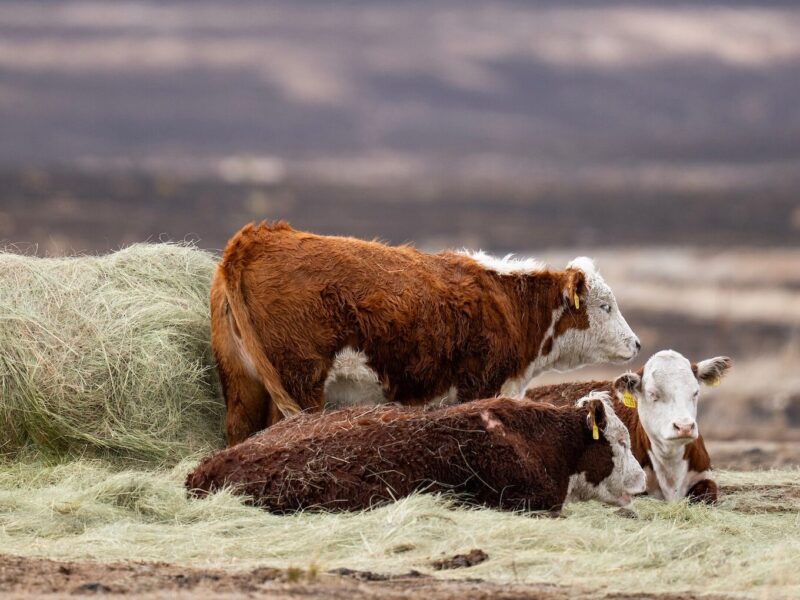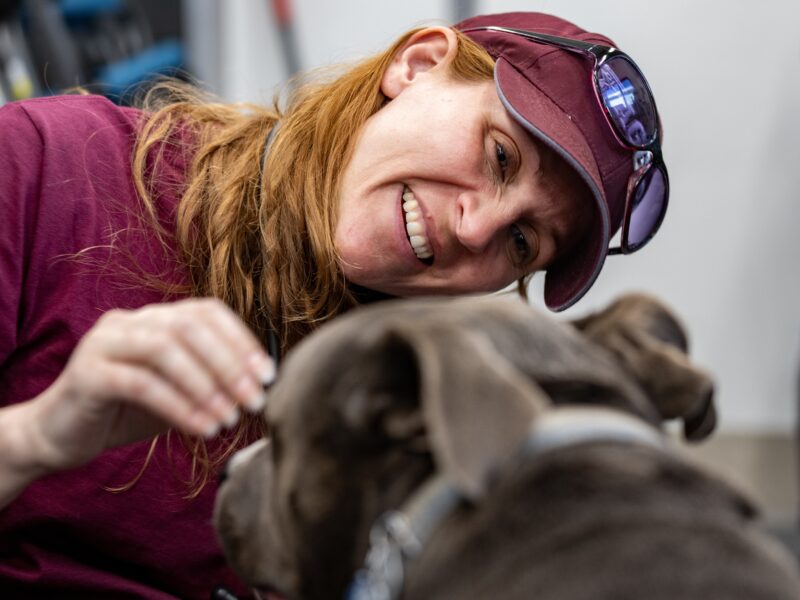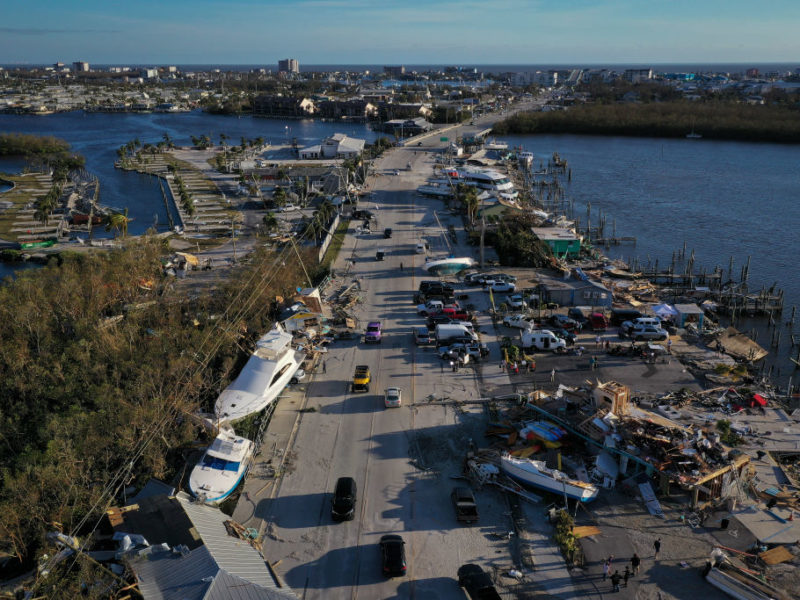Texas A&M Entities Practice Emergency Response, Provide Medical Services At Operation Lone Star
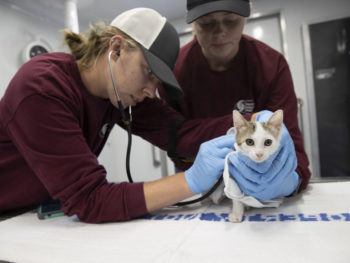
Last week, Texas A&M University entities including the Texas A&M Veterinary Emergency Team (VET), Texas A&M AgriLife Extension Service, and Texas A&M Health Science Center (Texas A&M Health) practiced their emergency response as part of Operation Lone Star.
Operation Lone Star, sponsored by the Texas Department of State Health Services (DSHS), is an annual disaster preparedness exercise that started in 1999. In addition to allowing emergency response teams the opportunity to operate the kinds of clinics used in a public health emergency, the exercise also provides services to residents in South Texas.
Rookie Year For The VET
Veterinary services were included in the exercise for the first time this year. For five days, the VET cared for 735 animals by providing wellness checks and vaccinations at its temporary clinic in Raymondville. DSHS Regional Health director Emilie Prot said the team was in a perfect location to maximize its impact.
“We are very grateful for the services provided by the Texas A&M VET,” she said. “Willacy County currently does not have a veterinarian in the entire county and pet health is important to keeping our community safe. Our animals are part of the family, and during a disaster, they can become a challenge. We wish to educate our community to be prepared in case of an evacuation.”
College of Veterinary Medicine & Biomedical Sciences Dean Dr. John August said participating in the operation was an easy call.
“I had an opportunity to see Operation Lone Star in action firsthand in July 2019 when I was in the School of Public Health,” he said. “I left very impressed from that experience with the impact the program made on families, especially children, along the border who did not have ready access to healthcare. So, I was delighted earlier this year when Texas A&M Health’s Interprofessional Education & Research (IPER) program extended an invitation to our college to participate for the first time.”
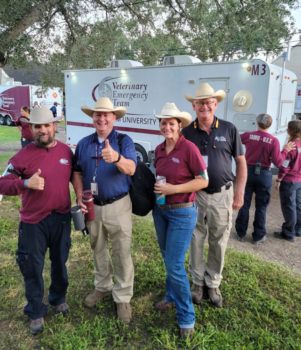
August saw the VET’s operation first-hand, and said he was impressed by the level of care provided.
“I returned from my visit to Raymondville this year extraordinarily proud of the whole VET team, involving faculty, technical staff and students,” he said. “It was a complicated deployment under difficult and very hot conditions. That our group provided primary care and wellness examinations for more than 730 dogs and cats is an astonishing accomplishment and a kindness that the animal-loving families of the town will not soon forget. I truly hope that this is the first of many future collaborations in Operation Lone Star for our college, and our participants in this year’s program deserve my very sincere thanks for a job well done.”
It was also the first time the VET was able to utilize its newest vehicle, an evacuation trailer donated earlier this year by the Banfield Foundation. The air-conditioned trailer housed while they waited to be returned to their owners. The Banfield Foundation also provided medications and other supplies.
With more than 30 participating VET members, the exercise was a great example of how all aspects of health care can come together to make an impact, said VET director Dr. Wesley Bissett.
“This is just one more example of how veterinary medicine, along with public health and all of the health disciplines, is necessary for the overall health and well-being of a community,” he said.
A key highlight of the trip was the return of veterinary students to the team. Because of the COVID-19 pandemic, it had been almost two years since students had been able to deploy. Participating students included fourth-year veterinary students on the VET clinical rotation, and thanks to the support of the Association of Former Students, students from the Primary Care Service rotation and second and third-year volunteers from the Student Veterinary Response Team were also included.
“This was an eye-opening experience, and it really showed what our true potential is not only individually but as a team,” said fourth-year student Adil Kassam. “This was a stressful environment, but we didn’t fall apart; we came together and solved problems.”
Partners In Response
A VET response almost always includes a coordinated response from the Texas A&M AgriLife Extension Service, and Operation Lone Star was no exception. This was the first joint operation since the formation of AgriLife Extension’s new Disaster Assessment and Recovery (DAR) Unit.
Eighteen DAR agents from across the state deployed to Raymondville and assisted at every level from logistics to command. They, along with the VET, treated the exercise like a real-world deployment, which included staying in tents on-site, using mobile platforms for logistics and providing medical care. The major difference was that during a typical disaster deployment, the DAR agents are instrumental in securing food for livestock and other large animals.
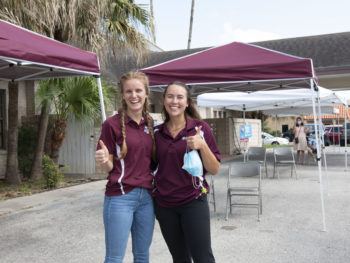
“This really gave us a unique opportunity to practice a deployment,” said DAR Unit Director Monty Dozier. “The only real difference between this and a real-world deployment was the preparation time and that we were only dealing with small animals.”
Human Health Impact
In addition to those in Raymondville, Texas A&M had representatives at multiple Operation Lone Star locations, including Laredo and Rio Grande City.
Texas A&M Health’s Interprofessional Education & Research (IPER) program has coordinated Texas A&M’s participation in Operation Lone Star since 2018. Other participating units included the College of Pharmacy, the School of Public Health, the College of Education & Human Development’s counseling psychology program, and the College of Agriculture & Life Sciences’ Department of Food and Nutrition Science.
Ten faculty members and 32 students from these units provided immunizations, medication reconciliations, telebehavioral health services, nutrition and tobacco cessation education, and data collection
In all, more than 100 people took part in Texas A&M’s efforts during Operation Lone Star, which typically provides approximately 40,000 services to 9,000 people annually.
IPER Executive Director Chris Kaunas said not only is the operation a great opportunity for students to make an impact, it’s a critical part of staying ready.
“We are fortunate to have the Texas Division of Emergency Management (TDEM) as a Texas A&M System entity and partner in these efforts,” she said. “We’ve all seen the impact of the pandemic and in a state that sees so many natural disasters, it’s important that our health professions students have opportunities to gain these vital disaster response skills.”
This article by Aubrey Bloom originally appeared on the College of Veterinary Medicine & Biomedical Sciences website.
